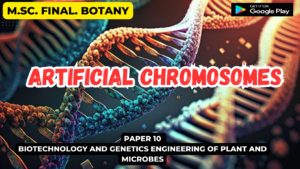![]()
Culture Media
- Growth and morphogenesis of plant tissues in vitro are mainly regulated by the composition of nutrient medium.
- The basic requirement of plant in vitro are similar to plant growing in soil but nutritional components promoting optimal growth in laboratory conditions may vary.
- Media compositions are therefore formulated considering specific requirements of a particular type of culture eg. shoot tip culture, anther culture, root or shoot initiation and multiplication etc
- Various types of media have been devised for specific organs and tissues.
- Whites medium is one of the earliest plant tissue culture media made for root culture.
- Murashige and skoog (1962) media promotes organogenesis and regeneration of plants in cultured tissues.
- B5 Medium (Gamborg et.al.1968) was designed for cell suspension or callus culture and also proved valuable for protoplast culture.
- For anther culture Nitch and Nitsch (1969) medium is frequently used
- The ratio as well as the concentrations of nutrients in these media match the optimum requirement with regards to growth and differentiation of cell or tissue system.
- The concentration of inorganic and organic constituents in the plant tissue culture media is expressed in mg/l or ppm or mglᐨ1.
- According to the recommendations of the international association for plant physiology mmol -1 should be used for expressing the concentration of macronutrients and μmol -1 for micronutrients hormones vitamins etc.
- A medium containing only chemically defined compounds is referred to as a synthetic medium. In Plant tissue culture media millimoles per liter is used for expressing the concentration of nutrients and organic nutrients required in large amounts and micro mole or lit. for nutrients required in small amounts.
- Some tissues grow on simple media containing only inorganic salts and utilizable carbon sources but for most others it is essential to supplement the medium with vitamins, amino acid and growth substances.
- The minerals present in the Plant Tissue Culture media can be used by plant cells as building blocks for the synthesis of organic molecules.
- The concentrations of the dissolved salts play an important role in the osmotic regulation and in maintaining the electrochemical potential.
- Nitrogen, sulfur and phosphorus are components of proteins and nucleic acid. Mg and micronutrient are essential part for catalysis of various metabolic reactions






